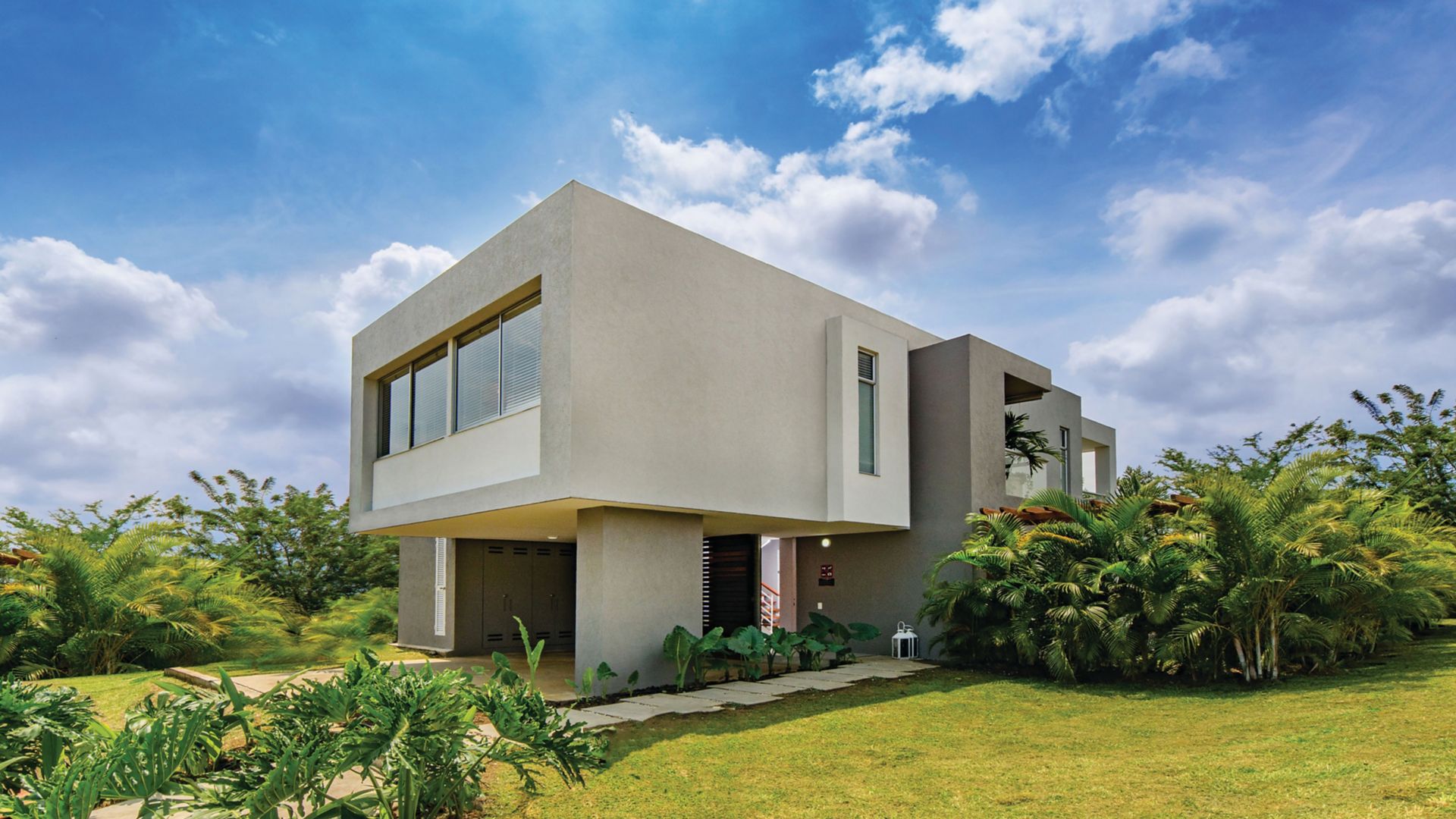Each country has its own construction techniques and preferences in terms of products to prepare and finish facades.
In spite of facade construction variations across regions, there is some common ground in the different application steps and products used to build up a facade.
- Function: main purpose of facade render/plaster
- Sika solutions: our area of expertise where we can provide products and knowhow
- Build-up: standard construction and how they are built up on the substrate
- Application: typical methods for installing facade plaster or renders
- Inspiration: textures and facades found on projects around the world
The Purpose of Facade Renders
Facade render, sometimes called facade plaster, has three main functions:
- Substrate preparation and leveling (covering the imperfections)
- Protection from climatic conditions (insulate, waterproof, etc.)
- Serve as a smooth, uniform decorative finish with many design options (aesthetics)
Sika Solutions for Facade Leveling and Finishing
Sika offers a wide range of mortars and renders for leveling, smoothing, and finishing your facade project with a variety of colors and textures available in different countries.
Sika provides leveling mortars and finishing solutions with SikaWall® and SikaMur® brand products.
Leveling Mortars
Finishing Solutions
Leveling & Finishing Solutions ("Monocouche")
How Rendered or Plastered Facades are Built
Typical Facade Construction
Facade renders or plaster can be applied on concrete, masonry or wood substrates in standard applications.
The number of layers may differ depending on the chosen system, aesthetic requirements, and market maturity level.
The following build-up is the most common method for facade finishing:
Base coat: Thick layer mortar for leveling your wall
Skim coat: Thin layer mortar for leveling/ smoothing the surface before the finishing coat
Finish coat: Thin or thick layer mortar as the final, decorative finish
Typical Build Up
See the image to the right to refer to the various layers in a facade build up:
- Substrate: Concrete or masonry wall
- Substrate preparation: concrete repair, crack filler, patching, primer (if necessary)
- Thick-layer of mortar for first leveling (e.g. on masonry): base coat / plastering
- Thin-layer(s) of mortar for smoothing: plastering, skim coat
- Final decorative finishing: paint, colored render, wallpaper, tiling
Special Options
There are special products available to reduce the layers required and therefore reduce application steps.
- Two-in-one products: base coat + skim coat or skim coat + finish render (#4 and 5) could be one product, or base coat + finish render (#3 and 5) in one product
- Three-in-one products: base coat + skim coat + color finish (#3, 4 and 5) could be one product, which is a specialty, one-coat render product called "monocouche"
A Range of Decorative Finish Options
The finish coat can be applied over base coats, skim coats or even directly over the substrate like in one-coat renders.
Here are some other key aspects of the SikaWall® and SikaMur® range of products:
- Come in different textures and colors
- Mineral and organic products available
- Highly breathable and flexible, yet protective and water-repellant
- Applied in thin or thick layers
Typical Application Methods for Facade Renders
Methods for Applying
There are several common techniques for applying facade mortars:
- Manual application using traditional onsite mixing
- Manual application using premix dry mix mortars
- Volume pump or spray application using premix dry mix mortars
Thickness of Application
The system may be applied either as thick or thin layers, depending on the application.
- Thick layer – leveling and finishing, e.g. "monocouche" (through-colored mortar)
- Thin layer – finishing, e.g. skim coating, acrylic renders
- Traditional way of preparing mortars by mixing sand, cement and water on site
- No control over the ratio of sand, cement and water being mixed – every mix is different, no consistency of quality
- Transported to application area by wheelbarrow
- No quality control on used materials – can contain inferior raw materials
- Dust, cement, mud and dirt pollutes surrounding ground, streets and air, creating an unhealthy environment for the construction workers
- Every mix is equal with high quality consistency
- Hand or continuous mixer application with basic automation
- Increased efficiency by 200% compared to traditional jobsite mixing
- Every mix is equal with high quality consistency
- Continuous mixer and spray application with high level automation
- Increased efficiency by 400% compared to traditional jobsite mixing
Key Brands
SikaWall®
SikaMur®
Sika’s Experts Provide Assistance to Benefit your Business
Local Contact
Contact a Sika expert near you for technical support and locally available products and systems.
Global Support
Contact Sika's global representative in case you need our support in an international project.

